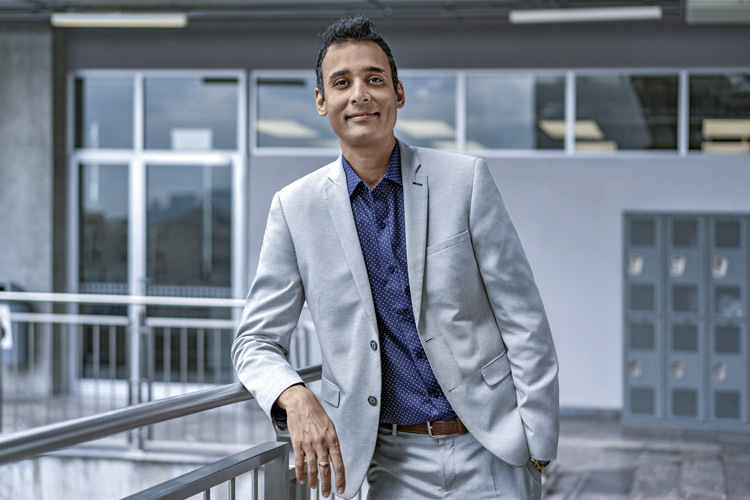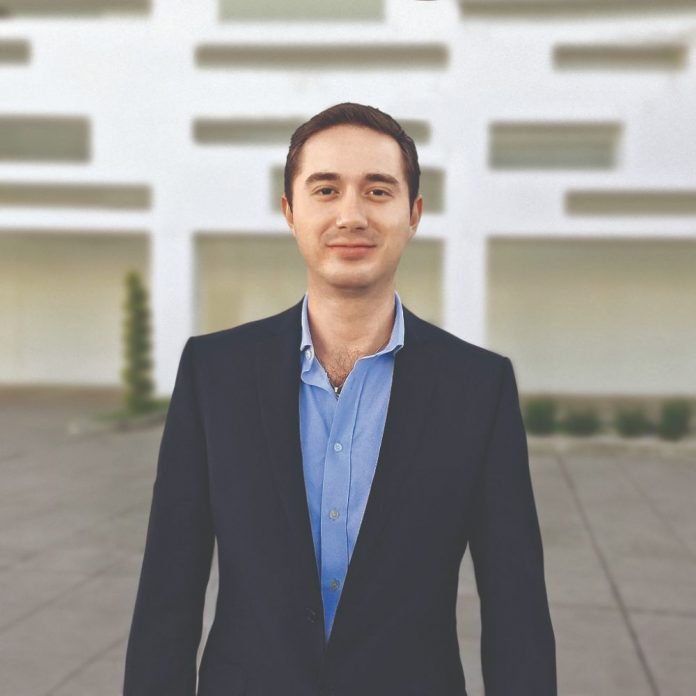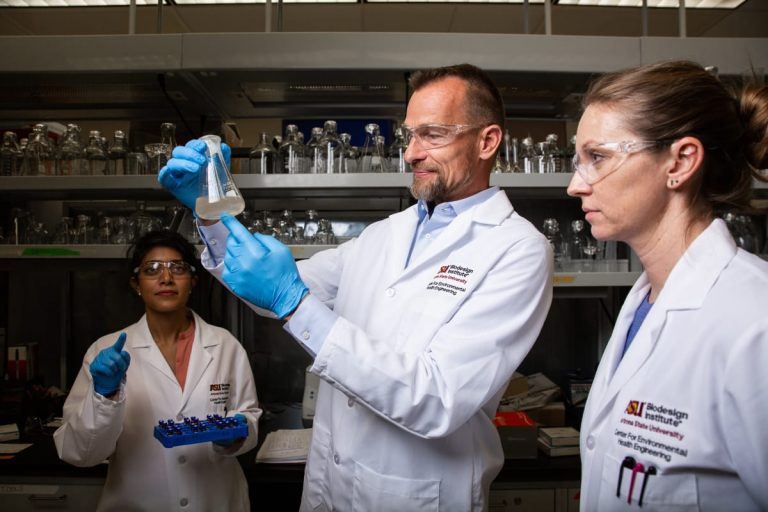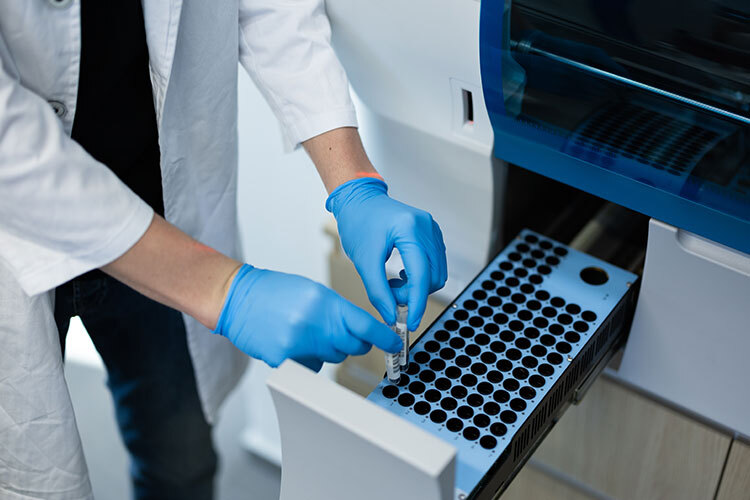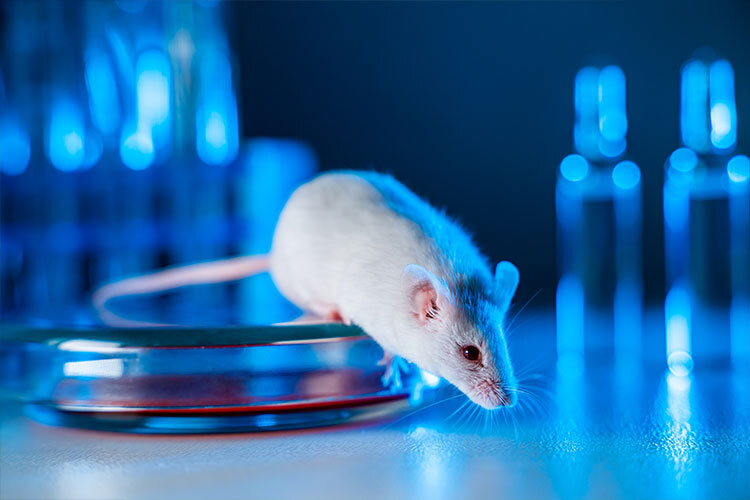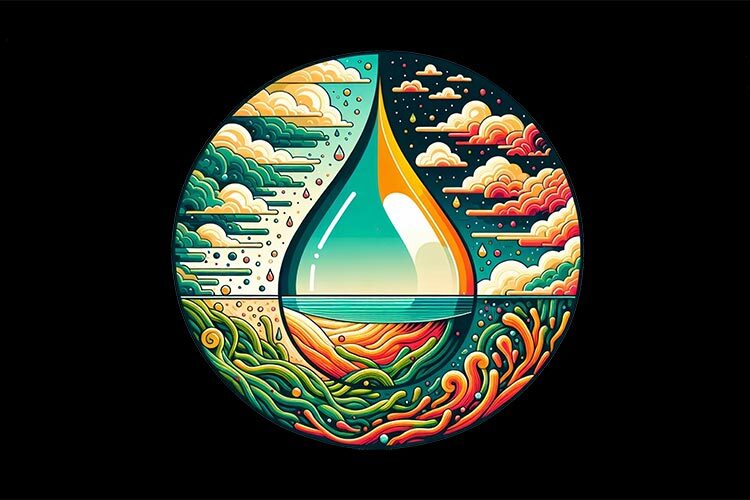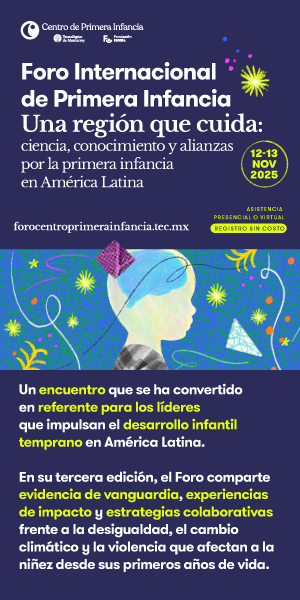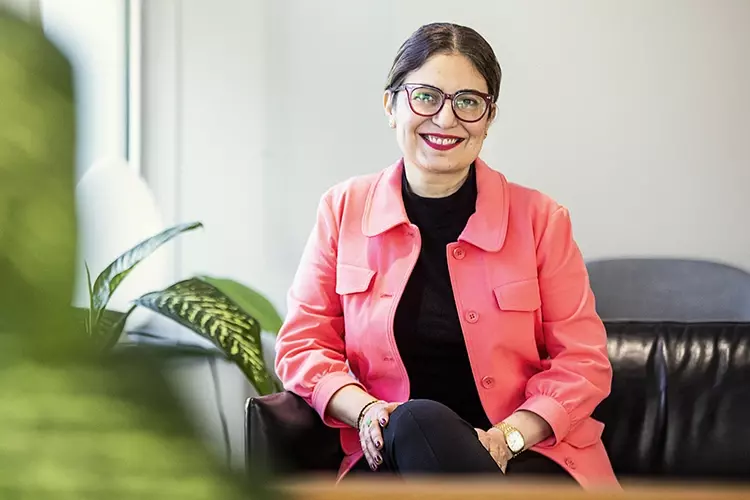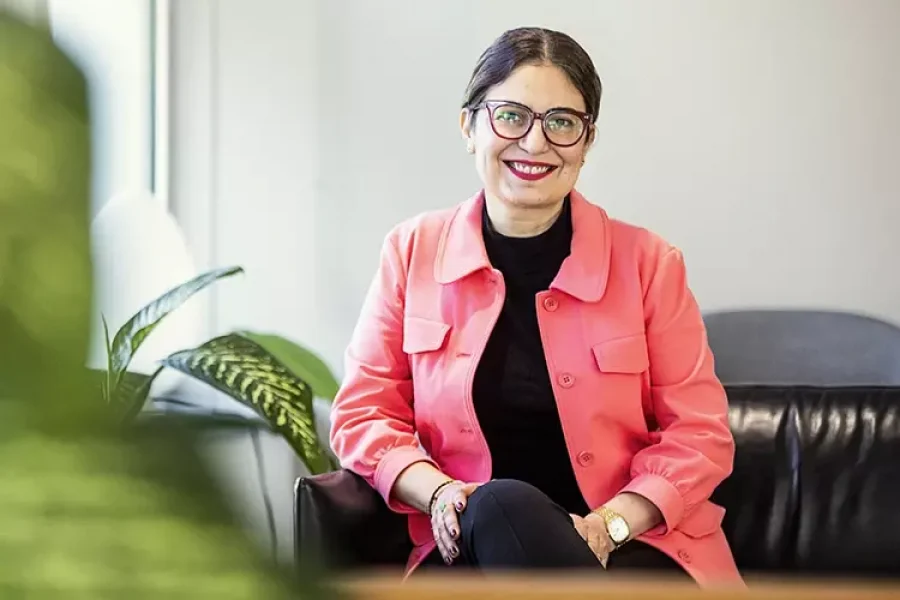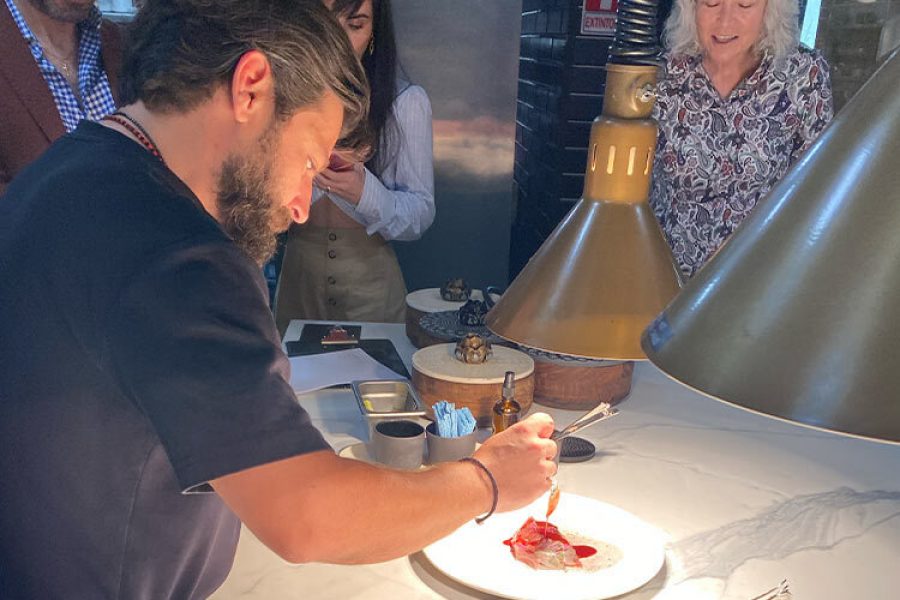Ashutosh Sharma grew up in Lalitpur, a city in Uttar Pradesh, the largest state in India, home to the iconic Taj Mahal. In this region, much of the population, including Sharma’s own family, strongly believes in the concepts of karma and dharma. He was raised in an inspiring household where Hinduism was both preached and practiced.
Sharma, the Director of the Bioengineering Center at Tecnológico de Monterrey, Querétaro campus, explains that dharma is about the purpose we are born with—a gift that turns into a life mission. “We need to explore what we are good at and how we can contribute our talents to the community,” says Ashu, as he prefers to be called.
In an interview with TecScience, the biotechnologist, who completed his Ph.D. in Sciences in Mexico, sports a plain gray suit that accentuates his slender frame and height. His easy smile and near-perfect Spanish further complement his demeanor.
Although he claims not to be very religious—logic, he says, is what guides his daily work—Sharma shares his thoughts on Hinduism and the diverse religions of India. “There’s a lot of talk about how to help others and how to make the planet better; that’s what dharma is about. Karma means that if you do good, good things will happen to you and multiply.”
Ashutosh Sharma was the founding director of the Bioengineering Center in 2019 and is currently the Director of the Regional Department of Bioengineering. He leads academic and research efforts in bioengineering, including biotechnology, food sciences, agri-food biosystems, and the graduate program in biotechnology.
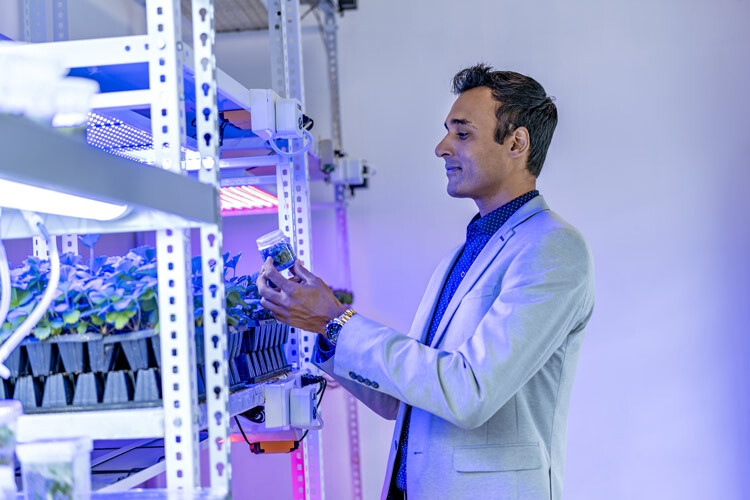
Committed Research to Solve Problems
In 2022, Sharma led a team that successfully cloned the Kiri tree, a species native to China, that could be used as a substitute for other timber trees and combat excessive logging. This achievement led to the establishment of the first tree micropropagation laboratory in Querétaro, now in the hands of industry experts.
Sharma’s first patent came early in his career in 2007 while working at the National Dairy Research Institute in India. For 18 days, he conducted multiple tests with cow manure to avoid direct contact with potentially aggressive animals. Eventually, he discovered a tissue source from which he could extract the animals’ DNA, significantly speeding up the process.
After earning his Ph.D. at the Universidad Autónoma del Estado de Morelos, Sharma completed a postdoctoral fellowship at the Universidad Nacional Autónoma de México (UNAM) and joined Tec in 2012 as a professor. “By fate, I ended up in Mexico, and I have no regrets at all. I believe it was a destiny defined from my point of view,” Ashu reflects on making his life in Mexico with his wife and daughter.
Who has inspired you in your career to pursue or start a new project?
“From a very young age, I observed my great-uncle Kailash Satyarthi, who received the Nobel Peace Prize in 2014, helping many people in need and children, even when he wasn’t yet a global figure. Despite being told he was wasting his time and even being threatened, I admired the way he continued working and channeling his energy and passion to impact society. My mother also inspired me; she rescues and cares for injured animals or those that have had accidents. My father, on the other hand, opened a school in a very marginalized area of India so that children wouldn’t have to travel long distances to attend school, and he has managed to ensure that 80% of the students there are girls. Perhaps it’s also because of them that my research work is driven by a desire to help others.”
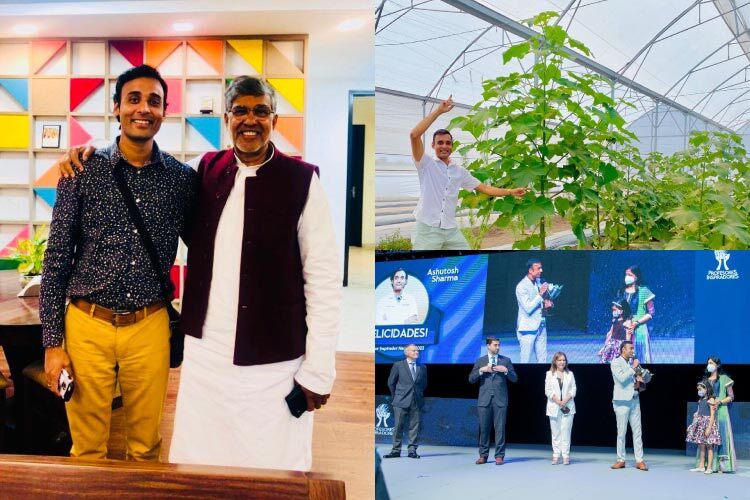
Knowing How to Take Risks and Do Business: The Keys to Success
What skills do you think are necessary for a researcher to turn their work into solutions for society and industry?
I believe there are five essential skills:
- First, you need the conviction that your research addresses a real-world problem.
- It’s crucial to be willing to take risks and engage in dialogue with companies. The private sector must also take risks, which is why establishing relationships with industry and understanding the needs of various expert companies in your research field is key. Multidisciplinarity is equally important—today, no problem can be solved by a single field of knowledge.
- Flexibility is another vital skill. Sometimes, scientists can be too rigid or too bound by protocols, but it’s essential to be open to listening to proposals from companies and stakeholders, even if it means changing the initial idea.
- Continuous updating is incredibly important.
- Lastly, focus on the business aspect, even though no one teaches researchers how to do this. I didn’t take a single course on business, technology transfer, or intellectual property, but I learned along the way, and I’m quite good at it. While it’s not for everyone, I recommend seeking mentors and experts in this area.
What are the key points scientists should identify to ensure their work or projects have an entrepreneurial impact?
First, it’s essential to identify problems that are relevant to society and seek support in market analyses that can confirm this. There are companies and experts dedicated to this who can provide feedback on the product.
Having strategic partners or mentors to offer guidance is also crucial. It’s not enough to form technical scientific teams; doing so often leaves other areas weak.
Securing funding or financing research is another key point for any scientist, but it’s always important to consider the social impact and sustainability of the idea, as funding is no longer given to projects that aren’t sustainable.
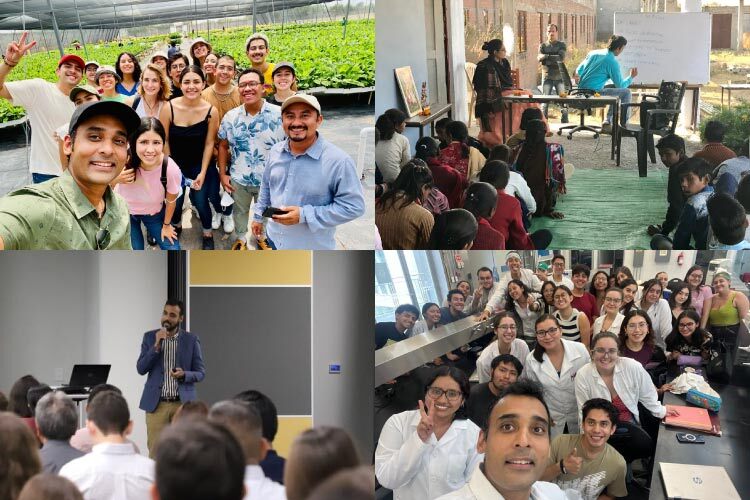
Balancing Basic and Applied Research
What would be the ideal process to maximize the potential of applied research globally?
I would start with a different approach to training young researchers. These scientists should not only be skilled technicians but also critical thinkers. Out of the five Ph.D. students I supervise, none are engaged in basic research; they all work with a company to solve a problem, possibly even turning it into a product. Yes, they will publish research to generate knowledge, but they are also solving a problem with the potential to create a patent, facilitate technology transfer, innovate, and have a social impact.
What is your daily life like at Tec de Monterrey, Querétaro campus?
I live life intensely (he says with a hint of humor). First, I dedicate myself to serving the students and supporting my team of professors, collaborators, and technicians to ensure operational excellence at all times. Then, I teach my classes and make sure the students get the experience they expect. After that, I mentor my graduate students, forming a strong bond that develops over four or five years; being their mentor is something I dedicate a significant portion of my time to. I also take field trips—I love visiting other ranches where I have projects, as well as CAETEC (Campo AgroExperimental, the largest lab at Tec de Monterrey). On other days, I visit various projects we have at company facilities in Hidalgo, Irapuato, and San Quintín.
What similarities have you found between Mexico and India?
People in both countries are very friendly, and there is a strong sense of acceptance toward other cultures and religions due to their openness. In India, for example, they welcome foreigners with open arms as well. The value of family is similar in both countries, with people being very close-knit and respectful of their elders. Additionally, when it comes to celebrations, weddings in India are grand events, but there is still much to learn from Mexico in this regard, especially in terms of enjoying life more, as people in India tend to focus too much on work.
Despite having lived in Mexico for 15 years and learning as much as possible about the country, Ashu mentions that he still misses India. However, he maintains a strong connection with his homeland, as he has been contacted by television programs to conduct scientific analyses, even remotely, especially during the COVID-19 pandemic. Additionally, the researcher continues to work on strengthening academic and scientific collaborations between the two countries.
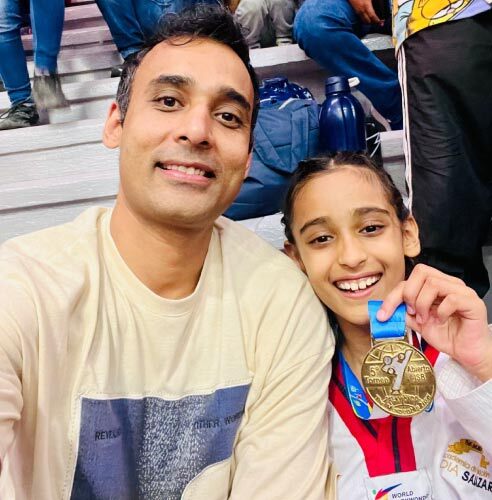
Funding for Research
How has your experience been in connecting research with industries here in Mexico, and what challenges do you see?
I’ve found that there are very positive, optimistic, and innovative people who are eager for their companies to have new products and adapt to new technologies. I believe Mexican companies are constantly evolving. Personally, my experience has been excellent; over the past five years, I’ve worked with more than 20 companies and have managed to establish solid collaborations.
In Mexico, the challenge lies in having more scientists who understand how to turn research into problem-solving solutions, who can make decisions and create synergies between universities, the private sector, and the government, so that everyone can join forces.
At what stage of research should scientists seek funding or investment for their projects with a business vision?
Funding is crucial, though it’s a constant challenge we face as scientists on a global scale. When it comes to applied research, I recommend seeking funds at very strategic points. If someone is trying to develop a technology or technological solution for a company or sector, then from the concept validation, through to the expansion and commercialization of the product, these are the three most critical stages. Of course, every project has different costs and timelines, so it can vary, but at each of these stages, it’s necessary to seek funding.
This brings us back to the negotiation aspect…
Negotiation skills are essential for researchers. When approaching a company that might be interested in your research, you can’t start with 30 technical slides—you’ll lose them. I’m speaking from experience: you need to give an executive presentation, even a very clear one-pager that says, “this is what the research is about, here’s the hypothesis, the income, the expenses, and the profit,” while also outlining the risks.
How do you manage the balance between academic research and the commercial demands of a biotech venture?
It should be approached from an integrative perspective. For a researcher to align technical and scientific objectives with commercial goals, strategic planning and follow-up are required. When thinking about the product launch, the patent, or the technology transfer, you realize that both objectives can go hand in hand, and sometimes one doesn’t work without the other.
For me, being a scientist means being a problem solver.
In that regard, what should be the scientist’s goal: generating knowledge or solving problems?
From my point of view—though I don’t want to judge anyone—I feel that if you’re a scientist and you publish a scientific article—which is a great achievement and our responsibility to generate knowledge—at the same time, it should offer a solution for society or industry. Where you see a direct impact in your field and manage to improve people’s quality of life, that’s where I believe the greatest satisfaction lies. I think it’s a personal mission for each of us, but in my opinion, being a scientist is a responsibility. I always say this: innovation is no longer an option for me; it’s my duty as a scientist.
Did you find this story interesting? Would you like to publish it? Contact our content editor to learn more at marianaleonm@tec.mx
